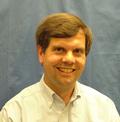Cited By
View all- Allender E(2023)Guest ColumnACM SIGACT News10.1145/3586165.358617554:1(63-81)Online publication date: 28-Feb-2023
- Cook JMertz I(2022)Trading time and space in catalytic branching programsProceedings of the 37th Computational Complexity Conference10.4230/LIPIcs.CCC.2022.8(1-21)Online publication date: 20-Jul-2022
- Chen LTell RCharikar MCohen E(2019)Bootstrapping results for threshold circuits “just beyond” known lower boundsProceedings of the 51st Annual ACM SIGACT Symposium on Theory of Computing10.1145/3313276.3316333(34-41)Online publication date: 23-Jun-2019


